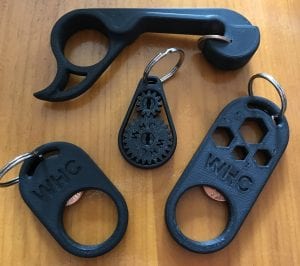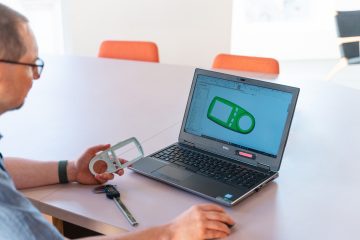Sometimes the best way to evaluate a design is to make it and physically test it. However, the cost of low-volume component manufacture can often be prohibitive to product development.
A 3D printed plastic rapid prototype can help the product development and decision-making processes. Questions such as,
“Is it comfortable to hold?”
“Can I reach the button easily?”
Or “Does the mechanism work as intended?” can be answered with a 3D printed prototype.
White horse CAD has IN HOUSE 3D printing capabilities, so we can print plastic models to help to demonstrate the strengths or weaknesses of the components.
Never underestimate the value of a physical prototype
Sometimes it is difficult to express in a few words and drawings how a new product will work or feel. But if you have a 3D print prototype you can demonstrate fit, form, and function with ease. Having a 3D print prototype helps people visualise the final product and demonstrates design suitability. Prototypes are also great for aiding discussion about modifications.
.Another advantage of using 3D prototypes is to assess the ergonomics of a design, it may look good on the screen, but perhaps it’s difficult to hold, or not suitable for left-handed users, or perhaps it just does not feel right in the hand.
The form of a component and how it feels in the hand is very subjective. So having a 3D prototype people can hold gives the opportunity for feedback from potential users that would not be possible from looking at a picture. Some of the best design suggestions and realisations come from people having products in their hands.
Explaining the features…

White Horse CAD 3D printed bottle openers
All of the items in the photo have been designed and printed by White Horse CAD. Each keyring has WHC embossed on a surface or cut through the entire thickness of them.
Top Centre, is a one-handed bottle opener. It has a 1p slotted into the right and side and is a fully functional prototype that has opened a few bottles of drink and is showing no signs of damage. This is an example of a strong functional prototype that also allows the assessment of ergonomics and feel.
Right Hand Lower Corner, is a bottle opener, with a selection of “sockets” for metric nuts. Again, it uses a 1p coin slotted in place, but this is also a functional prototype that demonstrates how strong 3D printed parts can be. The “sockets” were included to demonstrate the accuracy achievable using 3D printing, although some adjustments had to be made to the model file to ensure they came out exactly the right size.
Left Hand Lower Corner, is a “non-socket” version of the one on the right. Again, it uses a 1p coin slotted in place and is also also a functional prototype that demonstrates how strong 3D printed parts can be.
The Middle component is a keyring with 2 functional interlocking gears. this demonstrates the possible use of 3D printing for complex mechanisms.
These are all printed in black ABS, we have many other colours, including, red, white, blue, orange, green, and white. We also have HiPs and Ultrat materials which are used for parts that can be used in different environments. All of the prints shown are straight off the machine with no post processing, demonstrating the level of detail that can be achieved.



You must be logged in to post a comment.